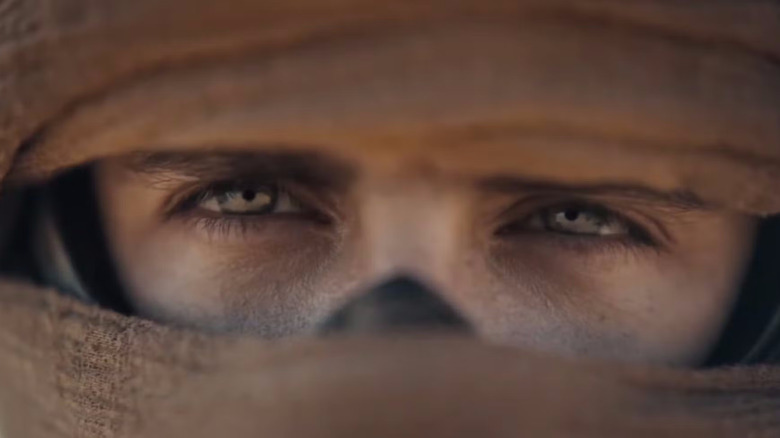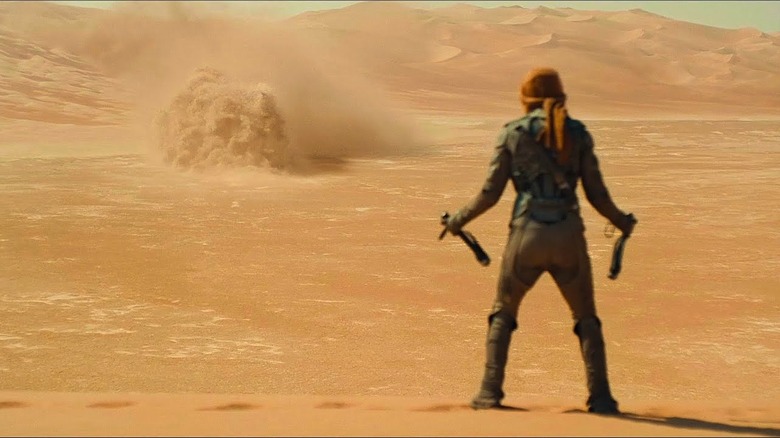Denis Villeneuve Had To Invent His Own Rules For One Of Dune 2's Most Important Scenes
When you hear "Dune," there are a few things that jump to mind. Fremen, spice, sand, and, of course, really big worms. The oversized, planet-wide entozoons are synonymous with Frank Herbert's world. And yet, the desert giants are a minor element in "Dune: Part One." It isn't until "Dune: Part Two" that they really show up in style. From facilitating equatorial migrations to crashing the Padishah Emperor's party in the final battle on Arrakis, the sandworms make the second "Dune" film absolutely epic. And there's one scene, in particular, that defines not just the movie but the entire "Dune" experience: the first time Paul Atreides wrangles and rides a worm on his own.
That sequence is relatively simple in the books, since there's only so much dramatic visualization you can do with the written word. In fact, the source material was sparse enough that it required connecting the dots and filling in some gaps to bring it to life on the screen. How do the Fremen actually get onto the worms? How do they get off? Director Denis Villeneuve dug into some of the details in an interview with Collider, he explained the complexities of properly bringing the scene to life. Here's what he had to say:
"It was a journey. It's still one of my favorite scenes. It was one of my most important. If you said to me, 'Which scene would you have done if there was no movie?' I would have done that scene. It's such a cinematic idea."
Digging into the details of worm riding
Here's a question. How do you ride a worm? Even if you've read the "Dune" books, there's a natural limit to what you can visualize from the descriptions and some missing info on basic things like how characters get on the worm in the first place. Villeneuve was well aware of that as he planned out Paul's epic inaugural worm ride, and he explained:
"On the page as you read, it's 'Paul rides the worm,' and you're like, 'Okay.' There's not really a description in the book of how Paul can get onto a worm, so I had to figure out, to invent, to create the technique that the Freman used to get onto a worm. I remember drawings to explain to my crew the strategy of the Fremen and the technique and how to get onto a worm, to ride a worm. Once I did that, I had also all done the storyboards to tell the story, of course, and then I explained to them how technically we will achieve that."
Despite the strange, sci-fi desert landscape, the "Dune" story is very much so rooted in a realistic depiction of Great Houses sparring in the distant reaches of the universe. This geopolitical reality made an accurate depiction of something as exotic as desert worm riding important to Villeneuve.
"I wanted it to look as real, as dangerous as possible. I wanted to feel the speed and I wanted to feel the danger, and the technical approach I wanted to take was very complex and required a lot of time. So, it was quite a challenge to bring that to the screen."
The results speak for themselves. The scene is one of the best in the entire movie (which is saying a lot). The suspension of disbelief is very real during the sequence, and the experience is one that sits with audiences long after the movie is complete. There's a worm-riding adventurer deep down inside all of us, and seeing such a visceral depiction on the screen brings that thrilling imagination alive. Here's to "Dune: Part Three" getting here as fast as possible.

